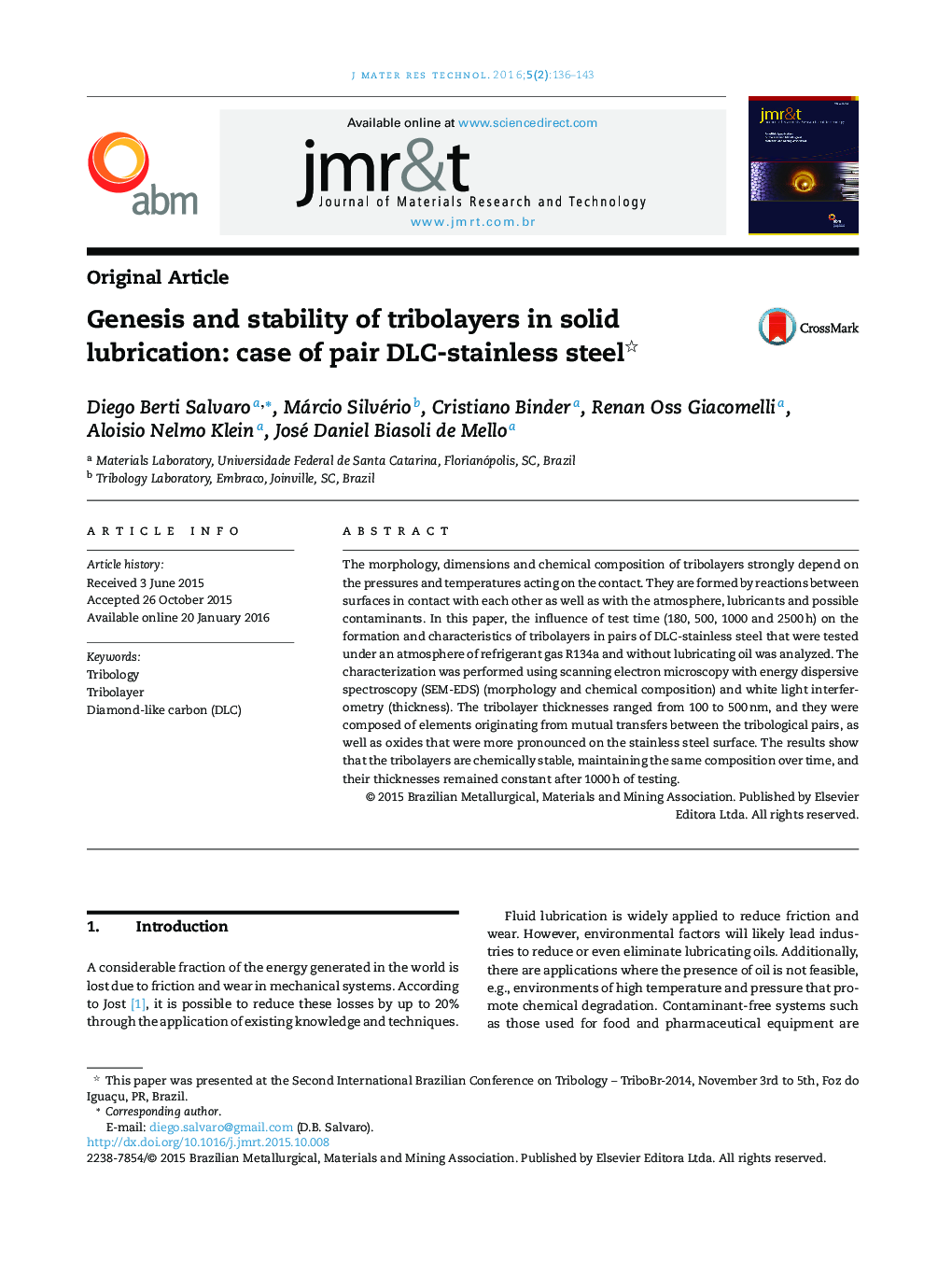| Article ID | Journal | Published Year | Pages | File Type |
|---|---|---|---|---|
| 1479879 | Journal of Materials Research and Technology | 2016 | 8 Pages |
The morphology, dimensions and chemical composition of tribolayers strongly depend on the pressures and temperatures acting on the contact. They are formed by reactions between surfaces in contact with each other as well as with the atmosphere, lubricants and possible contaminants. In this paper, the influence of test time (180, 500, 1000 and 2500 h) on the formation and characteristics of tribolayers in pairs of DLC-stainless steel that were tested under an atmosphere of refrigerant gas R134a and without lubricating oil was analyzed. The characterization was performed using scanning electron microscopy with energy dispersive spectroscopy (SEM-EDS) (morphology and chemical composition) and white light interferometry (thickness). The tribolayer thicknesses ranged from 100 to 500 nm, and they were composed of elements originating from mutual transfers between the tribological pairs, as well as oxides that were more pronounced on the stainless steel surface. The results show that the tribolayers are chemically stable, maintaining the same composition over time, and their thicknesses remained constant after 1000 h of testing.
